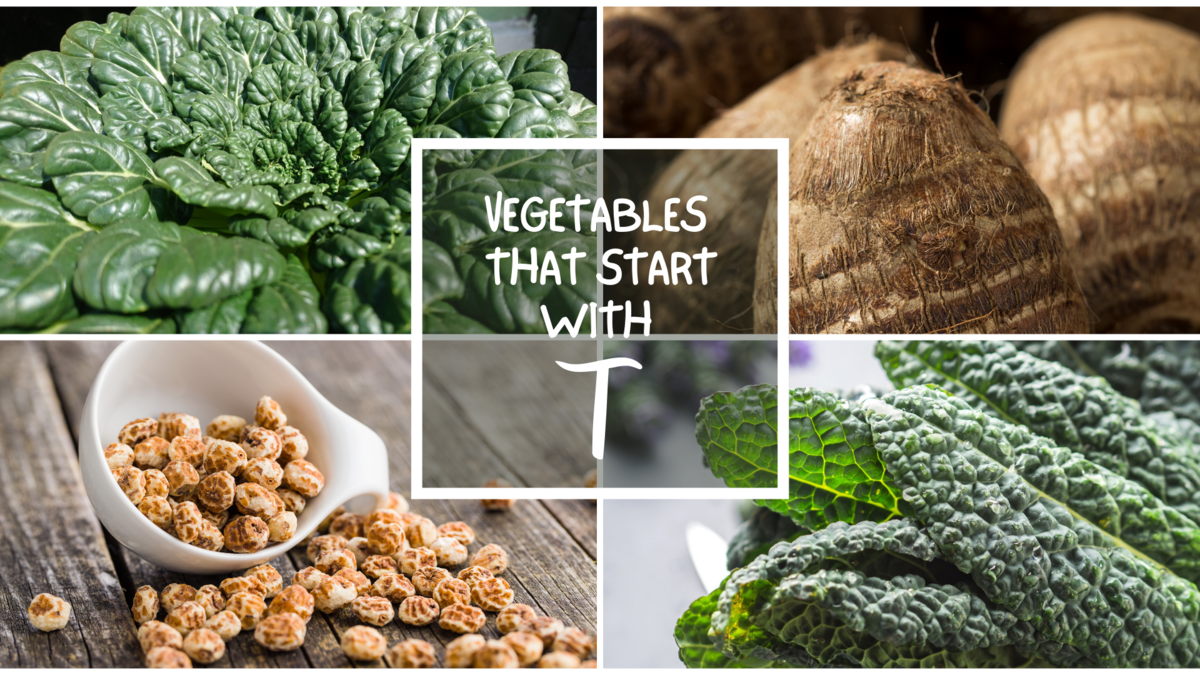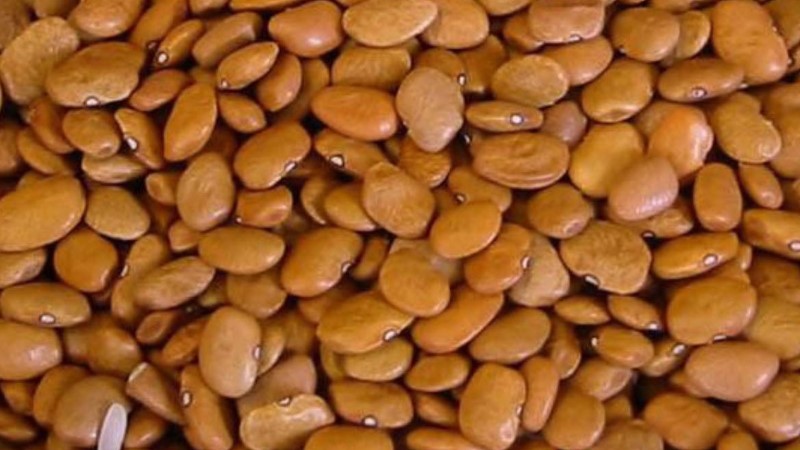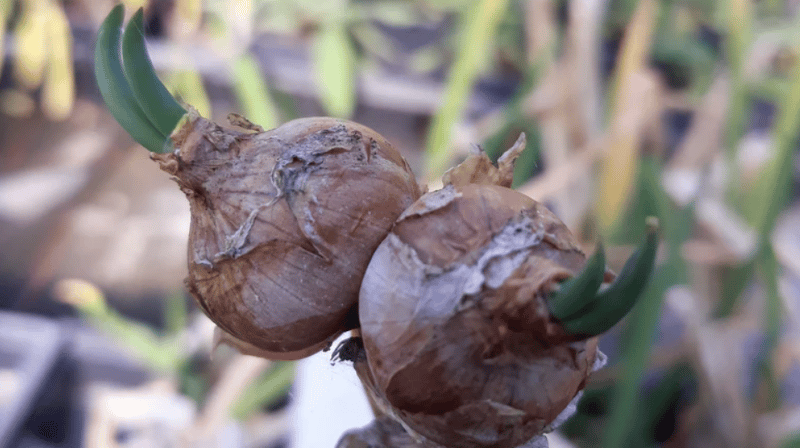All The Vegetables That Start With T
Important Note: When you buy through our links, we may earn a commission. As an Amazon Associate we earn from qualifying purchases. Content, pricing, offers and availability are subject to change at any time - more info.
Among the most important part of a person’s diet is a vegetable which we get from nature and does not need any processing. Any healthy diet should always include vegetables in it. This list of vegetables starting with the letter T is necessary because it will assist you in navigating the existing vegetables, both the ones you are familiar with and the unfamiliar ones, and boost your general knowledge of vegetables. Reading the list of vegetables starting with the letter T will help you broaden your daily diet, understand their origin, know their scientific names, their taste, their aroma, where you can buy them, how to cook the vegetables, and even the potential health benefits one can gain from eating the vegetables. The vegetables that start with the letter T are plenty, including tatsoi vegetables, tomato, tamarillo, Thai chili pepper, Tabasco pepper, tepary bean, taro, and tomatillo vegetable, among others. Below is a detailed list of all the vegetables that start with the letter T in the world:
- Tatsoi Vegetables
- Tarwi
- Taro
- Turmeric
- Turnip
- Tiger Nut
- Tepary Bean
- Tomatillo Vegetable
- Tamarind Leaves
- Thai Basil
- Thai Chili Pepper
- Three-Cornered Leek
- Tuscan Kale
- Tree Onion
- The Final Letter
Tatsoi Vegetables
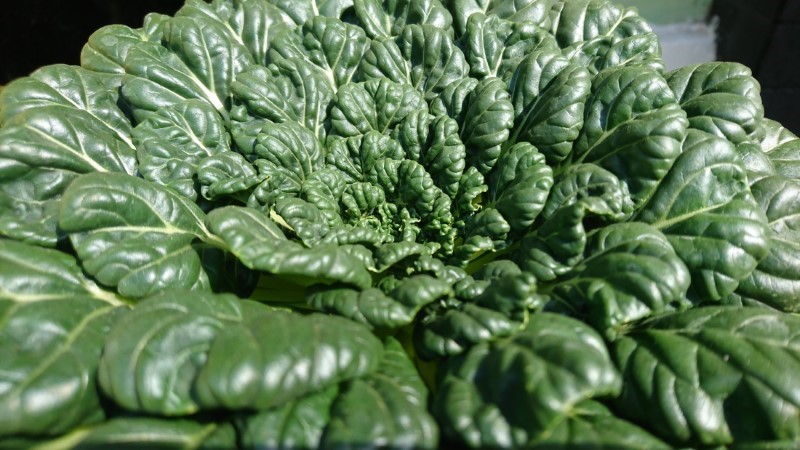
The scientific name of the tatsoi vegetable is Brassica rapa. It belongs to the brassica family. The vegetable is an Asian variety but has grown popular in North America. It has close relations to bok choy. The tatsoi leaves are used as an ingredient to make soup, salads, and pesto sauce.
The tatsoi vegetables have rounded leaves that almost look like a spoon. The vegetable has a buttery texture and flavor that is slightly sweet. Tatsoi nourishes in cold weather, where it grows stunning features such as a leafy rosette. It can grow in warm weather, but its outside appearance won’t be as attractive as those produced in cold weather. Despite the weather tatsoi is created, it will still have a tasty flavor. Tatsoi can be used in soups, salads, and warm dressing recipes.
You can enjoy tastoi vegetables either raw or cooked. It can be sautéed or steamed. Tatsoi works as a perfect alternative for spinach. If you want to buy tatsoi vegetables in the United States, you can find them at specialty grocery stores and farmers’ markets.
Tarwi

The scientific name of tarwi is Lupinus mutabilis. The edible vegetable belongs to the lupin species and is grown in the Andes. It originated from the Andean region of Peru, Bolivia, and Ecuador. The vegetable has been cultivated for over 1500 years now. Tarwi is a variety of bean that belongs to the lupin species. The Andes people eat tarwi as beans. Tarwi is a rich source of protein, and its seeds are used in producing cooking oil. Tarwi can be used as an ingredient to make soups and salads.
Tarwi is also called chocho, south American lupin, pearl lupin, Andean lupin, altramuz, and Peruvian field lupin. Tarwi is sometimes extracted to produce cooking oil. It has a bitter flavor. Tarwi is a rich source of protein.
Taro
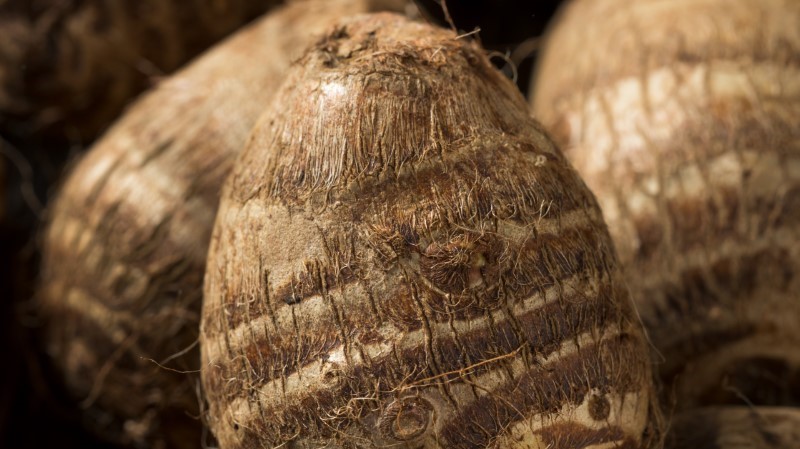
The scientific name of taro is Colocasia esculenta. It is found in the Araceae family and colocasia genus. Taro vegetable is a tropical plant, and therefore it is a root vegetable popular in the tropical regions. It is native to southeast Asia and southern India. This vegetable is a staple in Africa and some Asian countries. Both the corm and leaves of taro are edible. It has a nutty and sweet taste. To eat taro, you have to cook it first. Raw taro is toxic to humans.
The vegetable is a staple to people’s cultures in Africa, the oceanic, and south Asia. Taro is also known as talo, Saru, Kalo, madumbi, and amadumbe. The perennial plant is sometimes called elephant ears grown for ornamental purposes.
Turmeric

It is a widely used condiment. Turmeric belongs to the ginger family called Zingiberaceae. Dried turmeric is grounded to form a powder that has a yellow-orange color. The powder is used to flavor dishes in Asian countries. The turmeric leaves can be used to prepare a dish known as patoleo. Tumeric roots are also used for cooking.
Consuming turmeric in your dishes can assist you with health benefits such as performing ant-inflammatory activities, anti-oxidative properties, and anti-anxiety activities.
Turnip

The scientific name of turnip is Brassica rapa subsp. rapa. Turnip is also known as a white turnip. The vegetable is a biennial plant that belongs to the Brassicaceae family. It is a root vegetable with a fleshy taproot and is cultivated in temperate climates. Turnip looks like a large radish that is purple and white. The roots are the most popular part of a turnip eaten, although its leaves are also eaten. Turnip contains nutrients such as vitamin K and vitamin C. You can use turnip as an ingredient to make a more flavored curry and soup.
Turnip is believed to have originated from Asia and spread to temperate zones. The young turnip roots can be enjoyed raw in salads, pickled, or cooked. Turnips can be used as ingredients to make salads, soups, and stews. Turnips thrive in cold seasons and do not grow for a long time. Some people grow turnip-like fodder crops for animals.
Intake of turnip vegetables has potential health benefits such as performing anti-microbial activities, anti-cancer activities, and anti-oxidant activities.
Tiger Nut
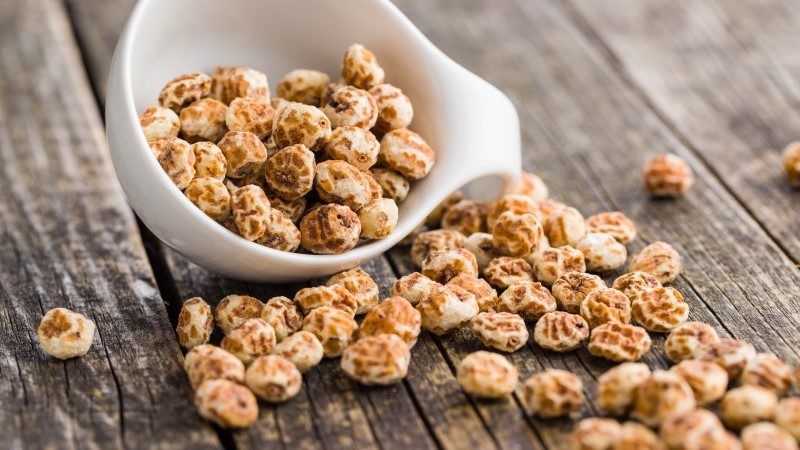
The scientific name of tiger nut is cyperus esculentus. It belongs to the sedge family and is commonly grown in the eastern hemisphere. Tiger nut is also called earth almonds, yellow nutsedge, and chufa. It is not a nut like its name suggests but tubers. Tiger nuts have edible tubers that are consumed as snacks. The tubers are delicious and tasty. The tiger nut bean can be used as an ingredient to make horchata.
Tiger nuts are small, and their size is similar to that of a chickpea. Tiger nuts flavor is a sweet, nutty taste and has a chewy texture. The nutty taste almost resembles a coconut’s taste. Tiger nuts are a rich source of iron, fiber, vitamin C, magnesium, phosphorus, protein, potassium, and zinc.
Tepary Bean
The scientific name of the tepary bean is Phaseolus acutifolius. This vegetable is a rich source of fiber and protein. Tepary bean has an orange color and a nutty flavor. It is originally from Mexico and the United States. The tepary bean is more drought and heat resistant compared to regular beans. The tepary bean plant requires moist soil to germinate then it can continue to nourish in dry conditions. It is grown in deserts and semi-deserts. Thereby tepary bean has low demand for water. Native Americans have cultivated tepary beans for over a millennium.
The Tepary bean has narrow leaves and climbing stems. It is also called pawi, tepari, yori mui, yori muni, epsomite, and pavi. The main area that produces tepary beans is northwestern Mexico. Other countries that grow the plant include Australia, Asia, and Africa.
Tomatillo Vegetable
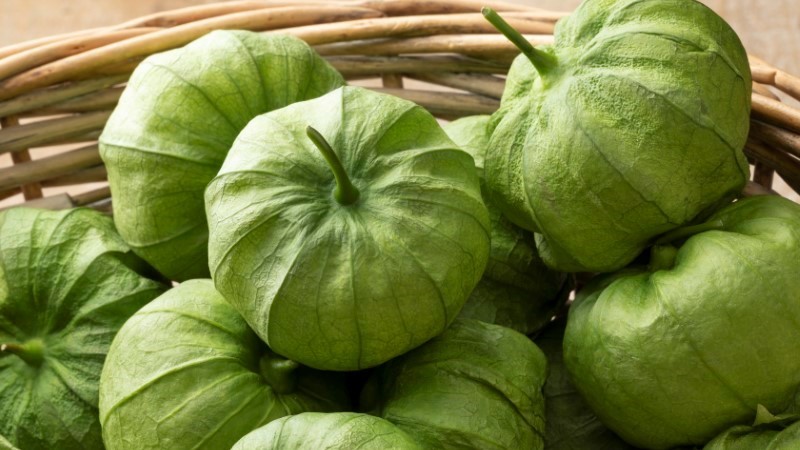
The scientific name of the tomatillo vegetable is Physalis philadelphica. It is also called Mexican husk tomatoes. It is small in size, and the tomatoes are green and purple. Tomatillo is native to Mexico and is a staple in Mexican cuisine. The vegetable has a tart flavor that many people enjoy. It is small with a spherical shape, and they are not baby tomatoes. Tomatillo’s color is either green or green-purple.
Tomatillo is widely grown in America because of its disease-resistant characteristics. The vegetable resembles unripe green tomatoes. It has a dry and leafy husk that surrounds it. The green color of tomatillos slightly fades when you cook them. The tomatillo is more acidic and less sweet in flavor than regular tomatoes. The general flavor of the tomatillo is bright and more vegetal. The inside of a tomatillo has less water and is denser.
To enjoy its flavor, you can eat the tomatillo vegetables raw or cook them by sautéing, grilling, or roasting. Tomatillo can be used as an ingredient to make sauces, curries, and salsa.
Tamarind Leaves
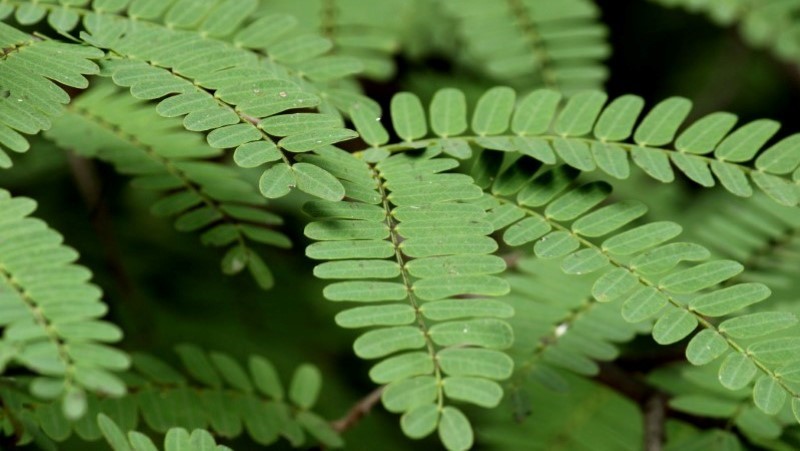
The scientific name of tamarind leaves is Tamarindus indica. The evergreen tree belongs to the Fabaceae family. It originated from Africa, specifically the tropical regions. Tamarind leaves mostly grow in subtropical and tropical areas. It is popular in Mexico, Central America, and India. The vegetable has leaves that look like ferns and have a sweet and sour flavor. The tamarind leaves have leaflets that are compound.
Tamarind leaves are used as an ingredient to make beverages and some traditional medicines. The tamarind tree is also grown for ornamental purposes, and its wood is used for carpentry work. It grows to about 24 meters tall.
Thai Basil
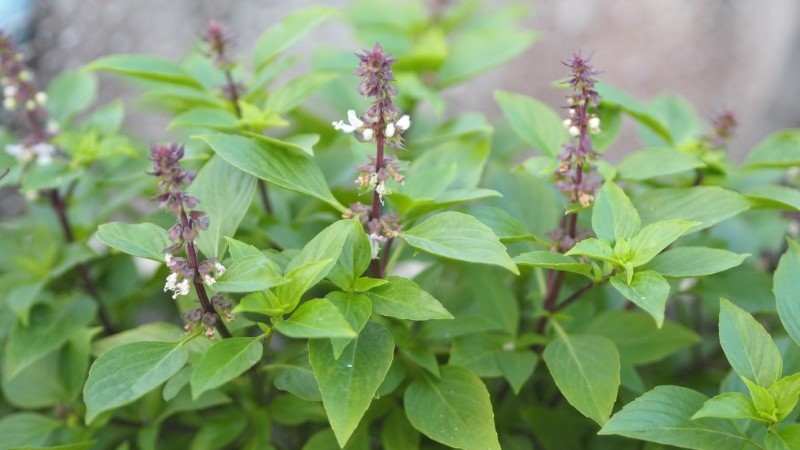
The scientific name of Thai basil is Ocimum basilicum var. thyrsiflora. The vegetable originates from southeast Asia. Thai basil is often used in Vietnamese food. Thai basil is different from sweet basil in the base of color and the leaves. Thai basil has leaves that have the shape of a spear and stems and flowers that are purple or pink and open. The leaves are small and narrow. It is also called anise basil, licorice basil, chi neang young, and cinnamon basil.
Thai basil has leaves that are decussate and opposite. Its stems are square-shaped. A fun fact about Thai basil is that its flowers need to be pinched so that the leaves do not turn out bitter. Thai basil is used as an ingredient to make cuisines such as curries.
Thai Chili Pepper

The scientific name of thai chili pepper is Capsicum annuum’ Bird’s Eye’. This is a dash of very spicy chili pepper. Thai chili pepper is also known as bird’s eye chili. It originated from Mexico and is currently cultivated across Asian countries.
The perennial plant is small and contains about three tapering fruits per node. Thai chili pepper has a pungent smell and is quite piquant. You can easily find them in a grocery store in America. The pepper is used as an ingredient to make salads, stir-fries, and soups. Or you can eat it raw, whether dried or fresh.
Three-Cornered Leek

The scientific name of Three-Cornered Leek is Allium triquetrum. The vegetable gets its name from its shape. Three-cornered leek has flower stalks that have three flowers resembling a triangle. The edible vegetable can be enjoyed raw, or you can cook them. Its taste resembles an actual leek.
The bulbous flowering plant originated from the Mediterranean basin. Three-cornered leek belongs to the allium genus.
Tuscan Kale
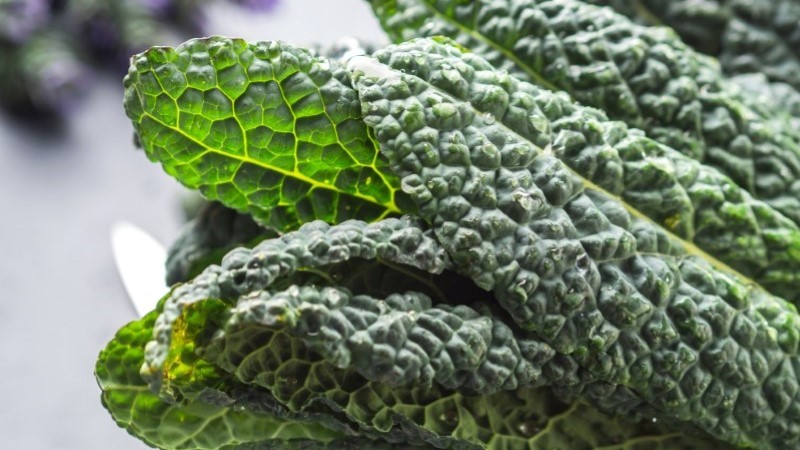
The scientific name of Tuscan kale is Brassica oleracea var. palmifolia. It is also known as dinosaur kale due to its bumpy leaves that resemble scales. Other names for Tuscan kale are cavolo nero, black kale, and lacinato kale. Tuscan kale has flat and dark green leaves. The Italian variety of vegetables has a mild and sweet flavor. It takes only three minutes to cook Tuscan scale.
Tree Onion
The scientific name of a tree onion is Allium × proliferum. It belongs to the Amaryllidaceae family and allium genus. Tree onion is also called the walking onion. The name walking onion is since its bulblets grow on the parent stalk as it bends it to the ground and picks the root from where it touches. It is the same as common onions in that they have a cluster of bulbs. The vegetable has a sweet but mild taste.
Other names for tree onions are Egyptian onions, turfed stone leek, and topsetting onions. The bullets of a tree onion are the size of a marble. The tree onions are used in cooking, just like the common onions. You can preserve them by pickling.
The health benefits of consuming tree onion are performing anti-platelet activities, anti-biotic properties, and anti-cancer activities.
The Final Letter
This list contains all there is that you need to know about vegetables that start with the letter T. This extensive list of vegetables will assist you in broadening your knowledge of existing vegetables in the world and diversifying your diet. Apart from knowing more about vegetables, you will be able to identify vegetables easily by their taste, aroma, and their appearance. The detailed list will help you know the origin of the vegetables, their nutritional value, where you can purchase them in the United States, recipes you can use the vegetables in, and potential health benefits.
Enjoy this list to broaden your diet of vegetables with new tasty flavors and discover new recipes you had not thought of with these vegetables.
